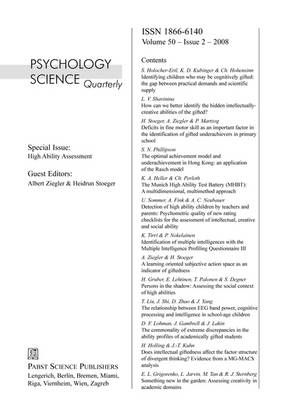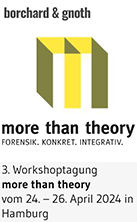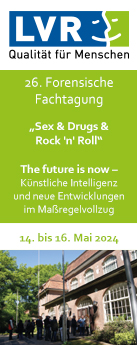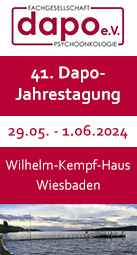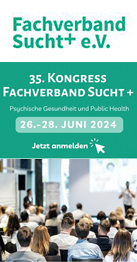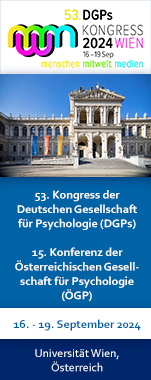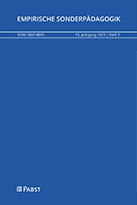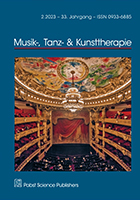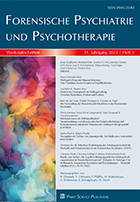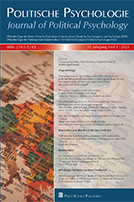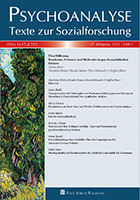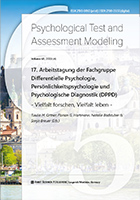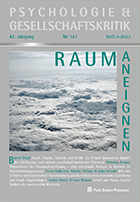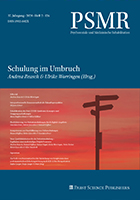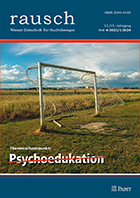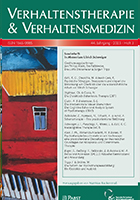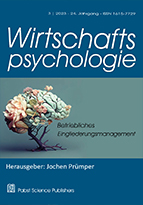Contents, Volume 50, 2008, Issue 2
HEIDRUN STOEGER & ALBERT ZIEGLER
Editorial: High Ability Assessment![]() PDF of the full article
PDF of the full article
STEFANA HOLOCHER-ERTL, KLAUS D. KUBINGER & CHRISTINE HOHENSINN
Identifying children who may be cognitively gifted: the gap between practical demands and scientific supply
Abstract |  PDF of the full article
PDF of the full article
LARISA V. SHAVININA
How can we better identify the hidden intellectually-creative abilities of the gifted?
Abstract | ![]() PDF of the full article
PDF of the full article
HEIDRUN STOEGER, ALBERT ZIEGLER & PHILIPP MARTZOG
Deficits in fine motor skill as an important factor in the identification of gifted underachievers in primary school
Abstract | ![]() PDF of the full article
PDF of the full article
SHANE N. PHILLIPSON
The optimal achievement model and underachievement in Hong Kong: an application of the Rasch model
Abstract | ![]() PDF of the full article
PDF of the full article
KURT A. HELLER & CHRISTOPH PERLETH
The Munich High Ability Test Battery (MHBT): A multidimensional, multimethod approach
Abstract | ![]() PDF of the full article
PDF of the full article
ULRIKE SOMMER, ANDREAS FINK & ALJOSCHA C. NEUBAUER
Detection of high ability children by teachers and parents: Psychometric quality of new rating checklists for the assessment of intellectual, creative and social ability
Abstract | ![]() PDF of the full article
PDF of the full article
KIRSI TIRRI & PETRI NOKELAINEN
Identification of multiple intelligences with the Multiple Intelligence Profiling Questionnaire III
Abstract | ![]() PDF of the full article
PDF of the full article
ALBERT ZIEGLER & HEIDRUN STOEGER
A learning oriented subjective action space as an indicator of giftedness
Abstract | ![]() PDF of the full article
PDF of the full article
HANS GRUBER, ERNO LEHTINEN, TUIRE PALONEN & STEFAN DEGNER
Persons in the shadow: Assessing the social context of high abilities
Abstract | ![]() PDF of the full article
PDF of the full article
TONGRAN LIU, JIANNONG SHI, DAHENG ZHAO & JIE YANG
The relationship between EEG band power, cognitive processing and intelligence in school-age children
Abstract | ![]() PDF of the full article
PDF of the full article
DAVID F. LOHMAN, JAMES GAMBRELL & JONI LAKIN
The commonality of extreme discrepancies in the ability profiles of academically gifted students
Abstract | ![]() PDF of the full article
PDF of the full article
HEINZ HOLLING & JÖRG-TOBIAS KUHN
Does intellectual giftedness affect the factor structure of divergent thinking? Evidence from a MG-MACS analysis
Abstract | ![]() PDF of the full article
PDF of the full article
ELENA L. GRIGORENKO, LINDA JARVIN, MEI TAN & ROBERT J. STERNBERG
Something new in the garden: Assessing creativity in academic domains
Abstract | ![]() PDF of the full article
PDF of the full article
Identifying children who may be cognitively gifted: the gap between practical demands and scientific supply
STEFANA HOLOCHER-ERTL, KLAUS D. KUBINGER & CHRISTINE HOHENSINN
Abstract
When it comes to high cognitive ability assessment, traditional "IQ-diagnosis has not proven to be particularly helpful. Psychological assessment aimed at promoting the development of gifted individuals requires a scientifically based theoretical model that identifies which cognitive strengths are necessary and which weaknesses can be compensated, and that takes the moderating effects of personality and environment into account when describing the interplay between ability and achievement. While such models - including the one described in the following paper - do exist, they currently lack an adequate theoretical foundation or at least a convincing empirical validation. Science still stands before the challenge of offering appropriate psychodiagnostic instruments to measure model components while fulfilling practitioners requirements. The following work describes a prototypic example of how such requirements might be met for ability testing. Yet in terms of personality and environmental variables, particularly caregiving, currently available methods are wholly unsuitable for meeting intended goals. Systematic behavioral observation offers a possible solution. Its validity, objectivity, comprehensiveness and efficiency in terms of high ability testing - as well as that of interview guides - must, however, be further explored.
Key words: high ability assessment, intelligence testbattery, adaptive testing, multifunctional testing, behavioral observation
Stefana Holocher-Ertl, M.Sc.
Center of Testing and Consulting
Psychological Assessment and Applied Psychometrics
Faculty of Psychology
University of Vienna
Liebiggasse 5
A-1010 Vienna, Austria
E-Mail: stefana.holocher-ertl@univie.ac.at
How can we better identify the hidden intellectually-creative abilities of the gifted?
LARISA V. SHAVININA
Abstract
This article proposes a new approach to the psychological assessment of potential intellectually-creative abilities of the gifted based on the new cognitive-developmental theory of giftedness developed by the author. The major limitations of conventional intelligence tests are shortly analyzed. The nine methodological and procedural principles, which constitute this approach, are presented along with the examples of new intelligence tests. The principles state that new intelligence tests should first of all examine the psychological mental context generated by gifted individuals themselves. These tests should have an "open character, evaluate the basis of giftedness (not its numerous traits or manifestations), and allow both retrospective and prospective assessment. New tests should not evaluate psychological functions/processes (e.g., attention or memory) and mental speed, and they should not be very long or time-consuming. Cognitive styles, metacognitive and extracognitive abilities should also be assessed. Childs sensitive periods - which form the developmental foundation of giftedness - should be examined as well.
Key words: Cognitive-developmental theory of giftedness, psychological mental context, retrospective and prospective assessment, methodological and procedural principles, assessment of intellectual abilities
Larisa V. Shavinina, Ph. D.
Département des Sciences Administratives
Université du Québec en Outaouais
Pavillon Lucien-Brault
101, rue Saint-Jean-Bosco
Case postale 1250, succursale Hull
Gatineau, Québec, J8X 3X7, Canada
E-Mail: Larisa.Shavinina@uqo.ca
Deficits in fine motor skill as an important factor in the identification of gifted underachievers in primary school
HEIDRUN STOEGER, ALBERT ZIEGLER & PHILIPP MARTZOG
Abstract
The underachievement of gifted students is one of the most disturbing and, simultaneously, most enduring problems for gifted education. Previously, the identification of underachievement has largely focused on discrepancies between achievement and cognitive abilities. This is partially due to the fact that, despite having detected some of the reasons for underachievement, current knowledge is still fragmentary and cannot fully explain the phenomenon. In particular the association with fine motor skills has not yet been adequately investigated. In a study with 4th grade students, it was demonstrated that achievement differences between gifted underachievers (n = 31) and achievers (n = 97) could best be explained by their fine motor skills and the interaction between fine motor skills and concentration. These results provide the first indications that deficits in fine motor skills can be predictors of underachievement and, consequently, could well be integrated into the identification process in the future. The findings are discussed with regard to action regulation and in terms of educational implications.
Key words: Giftedness, Fine Motor Skills, School Age Children, Underachiever, Identification
Prof. Heidrun Stoeger, Ph. D.
University of Regensburg
Chair for School Research
Universitätsstr. 31
93053 Regensburg, Germany
E-Mail: heidrun.stoeger@paedagogik.uni-regensburg.de
The optimal achievement model and underachievement in Hong Kong: an application of the Rasch model
SHANE N. PHILLIPSON
Abstract
Termed the optimal achievement model, a new method for the estimation of underachievement relies on measuring student potential (P) and achievement (A) using Rasch models and calculating an achievement index, IA, for each individual. This study extends a previous report (Phillipson & Tse, 2007) that estimated the proportion of Hong Kong students in Primary 5 to now include a sample of students from Primary 3 (n = 1406), Secondary 1 (n = 756) and Secondary 3 (n = 578), across six districts of Hong Kong. The students were administered a standardized test of mathematical achievement and the Ravens Progressive Matrices Test. Using the optimal achievement model, estimates of underachievement at six percentile bands showed that the proportion of students who were underachieving ranged from 10 % at the 50-59th percentile band up to 30 % at the >95th percentile band for Primary 3, Primary 5 and Secondary 1 students, and 50 % of Secondary 3 students. The estimation of IA at the level of the individual allows the researcher the possibility to directly study the interaction of the environment on student potential.
Key words: Mathematics, optimal achievement model, underachievement
Prof. Shane N. Phillipson, Ph. D.
The Department of Educational Psychology Counselling and Learning Needs
The Hong Kong Institute of Education
10 Lo Ping Rd
Tai Po, NT, Hong Kong
Phone: (852) 2948 8548
E-Mail: shane@ied.edu.hk
The Munich High Ability Test Battery (MHBT): A multidimensional, multimethod approach
KURT A. HELLER & CHRISTOPH PERLETH
Abstract
After a brief introduction the theoretical basis of the Munich High Ability Test-Battery (MHBT) will be outlined in the first part of the article. The MHBT has been developed in the framework of the Munich longitudinal study of giftedness and talent. The MHBT includes not only cognitive predictors measuring several dimensions and types of giftedness concerning intellectual, creative or social abilities etc., but also giftedness-relevant non-cognitive personality and social moderators measuring interests, motivations, learning emotions, self-concepts or family and school climate, educational style, quality of instruction, etc. The MHBT-instruments (different scales and dimensions) are described in greater detail.
In the second part of the article, after dealing with the objectivity, the reliability, and the validity of the MHBT, the authors discuss the standardization procedure including the development of grade-based T-norms respectively as well as several talent-profiles, e.g. of gifted achievers vs. underachievers, intellectual, creative, social talents or linguistic, math, science talent profiles etc. Finally, examples of talent search for gifted programs and case studies on the basis of MHBT should illustrate multidimensional identification procedures.
The MHBT fulfills the most relevant assessment tasks belonging to the gifted educational and counseling practice. The usefulness of the MHBT in the framework of giftedness research as well as of gifted program evaluation studies has also been proven in the last decade. Hence the MHBT offers many opportunities to assessing giftedness and talent.
Key words: Diagnosis of Giftedness, Identification, Munich High Ability Test Battery (MHBT), Munich Model of Giftedness (MMG), Talent Search
Prof. Kurt A. Heller, Ph. D.
University of Munich
Department of Psychology
Leopoldstr. 13
80802 München, Germany
E-Mail: heller@edupsy.uni-muenchen.de
Detection of high ability children by teachers and parents: Psychometric quality of new rating checklists for the assessment of intellectual, creative and social ability
ULRIKE SOMMER, ANDREAS FINK & ALJOSCHA C. NEUBAUER
Abstract
In the present study we devised scales for teachers and parents estimation of intellectual, creative and social abilities of fourth grade elementary school pupils. Their scores were related to psychometrically determined ability scores. Ninety-three school pupils in the age range between 9.3 and 11.2 years, as well as their parents and teachers took part. The new rating checklists proved as sufficiently reliable (particularly the teachers version). Analyses of validity showed a high correspondence in parents and teachers estimations of cognitive intelligence, but much lower correspondence for creativity and social ability. Correlating teachers and parents estimates with the respective psychometric tests shows that teachers and parents were better at identifying intellectual (high)ability than detecting creative and social abilities. With the exception of social (high)ability, where girls were usually regarded as highly socially gifted by their parents, there were no differences in parents and teachers estimations of boys and girls.
Key words: high ability, intelligence, creativity, social competence, parents and teachers estimation
Prof. Aljoscha C. Neubauer, Ph. D.
Institute of Psychology
University of Graz
Universitaetsplatz 2/III
A-8010 Graz, Austria
Phone: ++43 316 380 5124
Fax: ++43 316 380 9811
E-Mail: aljoscha.neubauer@uni-graz.at
Identification of multiple intelligences with the Multiple Intelligence Profiling Questionnaire III
KIRSI TIRRI & PETRI NOKELAINEN
Abstract
In this study, we present the latest version of the Multiple Intelligences Profiling Questionnaire (MIPQ III) that is based on Howard Gardners (e.g., 1983, 1999) MI theory. The operationalization of nine MI scales is tested with an empirical sample of Finnish preadolescents and adults (n = 410). Results of the internal consistency analysis show that the nine MIPQ III dimensions have satisfactory reliability coefficients with the sample. Results of the interscale correlation analysis show that (1) Logical-mathematical intelligence correlates positively with Spatial intelligence; (2) Linguistic intelligence correlates positively with Intrapersonal intelligence; (3) Linguistic and Intrapersonal scales correlate positively with the Spiritual and Environmental intelligences. Results of the correlation analysis between the gender, age and the MI scales show that (1) Males in both samples have higher self-rated Logical-mathematical intelligence than females; (2) Females rate their linguistic abilities higher than the males. The results of CFA show good generalizability characteristics of the MIPQ III scales. Our findings give important information to teachers and educators on how gender influences the self-perception of students abilities.
Key words: MI theory, MIPQ, psychometrics, survey, gender
Prof. Kirsi Tirri, Ph. D.
Department of Practical Theology
University of Helsinki
P.O. Box 33 (Aleksanterinkatu 7)
00014 University of Helsinki, Finland
E-Mail: kirsi.tirri@helsinki.fi
A learning oriented subjective action space as an indicator of giftedness
ALBERT ZIEGLER & HEIDRUN STOEGER
Abstract
Traditionally, in giftedness research, the intelligence quotient has been presumed to be the best predictor of high achievement levels. From the perspective of the Actiotope Model of Giftedness, however, it is merely one indicator among several on the effectiveness of the academic action repertoire. In this model, learning is considered to be more important than personal traits for attaining high levels of achievement. This is confirmed with three studies conducted with pupils in grades 8 through 11. In Study 1 it was shown that high achieving pupils in the subject of mathematics can be differentiated from other pupils according to the learning orientation of their subjective action space. High achievement can be better predicted over a temporal distance of six months through the learning orientation of the subjective action space than through intelligence. This finding was replicated in Study 2 for the scholastic subject of biology. In Study 3, an investigation was undertaken to determine whether the performance enhancing effect of a learning oriented subjective action space is also beneficial in coming to terms with experiences of failure. This premise could also be confirmed.
Key words: Giftedness, Intelligence, Actiotope, Subjective Action Space, Epistemic Beliefs
Prof. Albert Ziegler, Ph. D.
Educational Psychology
Ulm University
Albert-Einstein-Allee 47
89081 Ulm, Germany
E-Mail: albert.ziegler@uni-ulm.de
Persons in the shadow: Assessing the social context of high abilities
HANS GRUBER, ERNO LEHTINEN, TUIRE PALONEN & STEFAN DEGNER
Abstract
From a perspective of research on expertise we argue that the analysis of practice and of the growth of social networks is a promising approach to assessing indicators of high ability. Both groups
of variables jointly predict how subjects master critical changes or transitional periods in their careers. Although expert performance is frequently an individual matter, the development of expertise crucially depends on the presence of "persons in the shadow" who design practice patterns, direct the subjects' deliberate practice, and motivate them (often extrinsically). We present detailed analyses from the cases of highly successful professionals - a jazz guitarist, a consultant and a scientist - in order to show how individual and social aspects are combined in early expertise development. Thus, these aspects form the crucial components which have to be considered in the assessment of high abilities if an expertise approach is taken.
Key words: Assessment, Case study, Deliberate practice, Expertise, High ability, Persons in the shadow, Social network
Prof. Hans Gruber, Ph. D.
Institute of Educational Science
University of Regensburg
93040 Regensburg, Germany
E-Mail: hans.gruber@paedagogik.uni-regensburg.de
The relationship between EEG band power, cognitive processing and intelligence in school-age children
TONGRAN LIU, JIANNONG SHI, DAHENG ZHAO & JIE YANG
Abstract
To investigate the differences in event-related potential parameters related to childrens intelligence and cognitive ability, 24 individuals from an experimental class of intellectually gifted children and 23 intellectually average children as the control group from a regular class were selected in the present study and the main neural mechanism pertaining to high intelligence was investigated. The electroen-cephalogram (EEG) was recorded and the relationship between different percentages of Delta, Theta, Alpha1, Alpha2, Beta1 and Beta2 and intelligence and cognitive ability were analyzed. The results suggested that Delta power activity in brighter individuals was more than that in normal individuals, and Alpha2 and Beta1 power activity in higher intelligence individuals were less than that in normal individuals. In high ability group, Alpha1 was significantly correlated with visual search ability, and Theta band correlated with simple abstract matching significantly. While in the normal group, Delta band related significantly with short term memory abilities. Spectral EEG parameters could be regarded as neural bases for fast reaction and a good tool to discriminate high intelligent children from the average.
Key words: Event-related potential; EEG band power; Intelligence; Cognitive processing, gifted children
Prof. Jiannong Shi, Ph. D.
Division of Developmental and Educational Psychology
Chinese Academy of Sciences
10A Datun Road
Chaoyang District
100101 Beijing, PR China
Phone: + 86 10 64855744
Fax: + 86 10 64872070
E-Mail: shijn@psych.ac.cn
The commonality of extreme discrepancies in the ability profiles of academically gifted students
DAVID F. LOHMAN, JAMES GAMBRELL & JONI LAKIN
Abstract
Extreme discrepancies in abilities are more common among the most and least able students than among average ability children. Therefore, procedures for identifying gifted children that deliberately or inadvertently rely on a composite score that averages across ability domains will exclude many children who reason exceptionally well in particular symbol systems. In this article, we first discuss general issues in the measurement of ability profiles. We then introduce a method for categorizing score profiles and finally document the reliability and stability of score profiles using the 2000 standardization data of the Cognitive Abilities Test (Lohman & Hagen, 2001a).
Key words: ability testing, profiles, identification of gifted
Prof. David F. Lohmann, Ph. D.
224 Lindquist Center
The University of Iowa
Iowa City, IA 52240, USA
E-Mail: david-lohman@uiowa.edu
Does intellectual giftedness affect the factor structure of divergent thinking? Evidence from a MG-MACS analysis
HEINZ HOLLING & JÖRG-TOBIAS KUHN
Abstract
This study explored the latent structure of divergent thinking as a cognitive ability across gifted and non-gifted samples of students utilizing multiple-group analysis of mean and covariance structures (MG-MACS). Whereas Spearmans law of diminishing returns postulates lower g saturation of cognitive tests with increasing ability level and consequently, a lower correlation of cognitive abilities in more gifted samples, recent evidence from creativity research has shown that correlations of divergent thinking with intelligence are unaffected by ability level. In order to investigate this conflicting state of affairs with respect to divergent thinking, we utilized increasingly restrictive MG-MACS models that were capable of comparing latent variances, covariances, and means between gifted (IQ > 130) and non-gifted (IQ ≤ 130) groups of students. In a sample of 1070 German school students, we found that a MG-MACS model assuming partial strict measurement invariance with respect to the postulated factor model of verbal, figural, and numerical divergent thinking could not be rejected. Further, latent variances and covariances of latent divergent thinking factors did not significantly differ between groups, whereas the gifted group exhibited significantly higher latent means. Finally, implications of our results for future research on the latent structure of divergent thinking are discussed.
Key words: Giftedness; Confirmatory factor analysis
Prof. Heinz Holling, Ph. D.
Psychological Department IV
University of Muenster
Fliednerst. 21
48149 Muenster, Germany
Phone: ++49 (0) 251-833 84 85
Fax: ++49 (0) 251-833 94 69
E-Mail: holling@psy.uni-muenster.de
Something new in the garden: Assessing creativity in academic domains
ELENA L. GRIGORENKO, LINDA JARVIN, MEI TAN & ROBERT J. STERNBERG
Abstract
Although not generally included in the classroom curricula of the past, creativity and creative thinking are emerging as important skills that can and should be taught. While considering current research and definitions of these constructs, this paper proposes an understanding of the construct of creativity as a skill that can be actively and constructively nurtured within the context of the classroom. Presenting empirical work in which analytical assessment and creative assessment data are collected from 1120 students within the same test of reading comprehension, and the psychometric properties of each are evaluated and compared using item-response theory (IRT), we share results that reflect the differentiation of skills and variations in analytical and creative competencies. By this means, we also pose a way of developing proficiency scales for creativity, as well as ways to naturally integrate the encouragement of creativity in the classroom.
Key words: creativity, competency, proficiency, assessment, reading comprehension
Prof. Elena L. Grigorenko, Ph. D.
Child Study Center
Department of Psychology
Department of Epidemiology & Public Health
Yale University
230 South Frontage Road
New Haven, CT 06519-1124
E-Mail: elena.grigorenko@yale.edu


